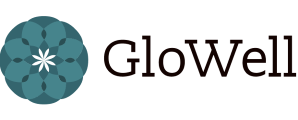What goes on your body… goes in your body.
Sound familiar?
It’s not just hyperbole.
A growing amount of research has shown that the ingredients in cosmetics, personal care, and hair care products are showing up inside our bodies.
Ew.
Think about all the ways we’re exposed to cosmetic ingredients:
- breathing in sprays and powders
- absorbing lotions and creams into your skin
- “eating” lipstick, gloss, and balms — up to nine pounds of lipstick in your life!
And many of these cosmetic ingredients are scary ugly.
The Ugly Truth About the Beauty Industry
Most of us assume the products we buy from stores and salons are safe. They must be heavily regulated, their ingredients tested and approved by government agencies working diligently around the clock to keep us safe from harmful ingredients and unscrupulous companies.
Unfortunately…
Most of us are wrong.
Especially when it comes to our beauty and personal care products.
“The FDA does not review or approve the vast majority of cosmetic products or ingredients before they go on the market.” – Environmental Working Group (EWG)
According to the FDA, manufacturers may use just about any ingredient in the formulation of a cosmetic.
Neither the law or the FDA requires specific tests to demonstrate the safety of individual products or ingredients, and cosmetic companies aren’t required to share their safety information with the FDA.
Did you catch that?
“Cosmetic products and ingredients do not need FDA premarket approval, with the exception of color additives.” – FDA.gov
And in case those truth bombs weren’t enough, it gets worse:
Cosmetic companies aren’t even required to fully disclose their ingredients on their labels!
Federal law allows companies to leave some chemicals off labels, especially those considered “trade secrets” or used in fragrances.
Basically, cosmetics companies can pretty put whatever they want into their formulations. They “safety test” their products themselves and aren’t required to disclose the results of these tests.
Most frightening of all?
They’re not required to disclose their full ingredient lists to YOU.
Breast Cancer Prevention Partners (BCPP) performed an independent, third-party analysis of a random selection of personal care and cleaning products to find out just how many harmful chemicals are really lurking in your favorite perfumes, shampoos, and shower cleaners.
The results were stunning.
On average, BCPP found personal care products contain MORE chemicals than cleaning products.
That’s right: it may be safer to spritz yourself with shower cleaner than to spray on that body spray or perfume.
But that’s not the only shocking truth uncovered.
BCPP found:
- Products marketed to children and women of color contained a higher than average number of chemicals.
- The most hazardous product tested was a hair care product specifically marketed to kids of color.
- Products marked “green”, “eco-friendly”, or as “pink ribbon” products (indicating breast cancer support) had the highest percentage of chemicals linked to chronic health effects.
How Can You Avoid Toxic Beauty Products?
That was a lot of bad news to take in.
You’ve been lied to.
And there’s a good chance you’ve been slathering potentially harmful chemicals all over your face and body — for years.
But now that you’re thoroughly freaked out, here’s the good news:
You’re not powerless.
Obviously, label-reading alone is not going to help you dig deep to find the safest beauty products to use. After all, there could be hundreds of undisclosed chemicals lurking in just a single beauty product.
Luckily, there is a way to find safer beauty products you can truly trust— just turn to the EWG Skin Deep database for help.
The Environmental Working Group researches thousands of brands and products and scores these products for safety and toxicity. EWG also has a verification program for brands that meet its strict standards: fully disclosed ingredient lists and free of ingredients that have been banned in other countries, to name a few.
Did you know? Other countries have banned over 1,300 ingredients for use in cosmetics. The US has only banned 11.
When in doubt, turn to the database for the truth about your favorite products, or to seek out a non-toxic alternative.
Surviving the Wild West
The beauty industry is kind of like the Wild West. While there may be a sheriff in town (the FDA), you can’t really rely on “the law” to be looking after your personal health and wellbeing.
It’s unsettling to say the least.
But you’re not completely up a creek without a paddle when it comes to looking your best.
While they may be outliers, there ARE cosmetic, personal care, and fragrance companies who want to do better.
Brands that are committed to transparency and creating awesome products without toxic chemicals.
Independent resources like the EWG Skin Deep Database can help you get started. Then comes the fun part — trying new products from ethical beauty brands to create a brand-new, non-toxic beauty routine that’s perfect for you.











Join the GloWell Community on Social!
Don't risk missing a single thing. Follow us on social and become part of the GloWell community.